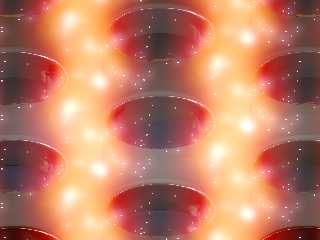|
 |
Hey Bald Eagle,
first, it's funny you discovered the time zone thing ... actually there is
really
that 1 year + difference between Germany and New Hampshire. But it is a secret,
so I changed the date to 2017 for now ;)
The statement of Alain is actually documented here:
http://www.povray.org/documentation/view/3.6.1/422/
(section 2.6.2.3.4 Multiple Density vs. Multiple Media) And he is absolutely
right,
the densities multiply while the media add.
So I did that ... the good thing: it works! ... the bad thing: if I add the
glowing auras for the number of emitters I planned (50 per unit cell) I am
getting
the following error:
File 'phc_and_excitation_enhancement.pov' line 372: Parse Error: Expected
'numeric expression', undeclared identifier 'Trans_vec' found instead
Fatal error in parser: Cannot parse input.
Render failed
I'm kind of shocked :D So there seems now way around this except for compiling
Pov-ray myself. So I'll let it be :) The workaround: I'll use the multiple media
technique only for the field render and stick to the individual object approach
for the emitters. (This may cause some artifacts which I may erase using
Photoshop).
> So, it sounds to me like what you need to do is have a media statement for each
> of your spheres.
> It looks like your box is 100 x 100, so perhaps you just adjust the drop-off in
> your exponential decay formula to compensate for that 100x scaling of the media
> unit cube.
> The spheres just get placed in that 100 x 100 box as well instead of in a unit
> cell.
This turned out to be unnecessary because Pov-ray seems to define the density
in a unit cube no matter what size the container has (don't ask me why). Somehow
it worked out with the same transformations as before!
> I see you are using Stephen's df3 code - but since all of your media statements
> and densities are identical except for color, I don't think you need to use 3
> statements - just one, with a full rgb value.
> Stephen was rendering df3 objects that had uneven color variation - so he needed
> to split up the colors so that the R, the G, and the B would be mapped with
> different densities, and so add up to a full color range.
> That ought to save you some render time.
I do not agree (maybe it's my fault, sorry): I want to use my own color map, so
how should I do this without individual RGB? Instead I could move the color
mapping to be done in Pov-ray (did not try because it works now). But with this
solution I don't see how to use transmittance...
> How long does it take to render this now?
> You must be using one of your computers set up for FEM...
No it was rendered on a workstation at home :) (we had ours for 10 years and it
was
replaced shortly). Its an AMD Ryzen 7 3.4GHz Eight-Core (plus Hyperthreading).
It
was rendered in 20 Minutes or so :) Actually I have access to, say a server with
64
CPUs and 1 TB RAM for the final render. I also plan to have a short movie for my
PhD defence talk with a camera movement into the scene and maybe pulsating
emitters.
Would it be nice in your opinion?
(Update, the attached scene took 6 minutes without the emitter light, which
don't
seem to contribute very much)
> Along those lines - I would have expected "more" of the HDRI to be visible on
> your surface. Maybe you want that, maybe you don't.
> I also see some yellowish stuff in the holes on the sides near the camera - is
> that supposed to be there? Is it some unintended artifact?
I was adding a Gaussian blur using Photoshop to the HDRI and the silicon is
weakly
reflecting. I off course (from a scientific point of view) do not want to see
much
of the Hotel :D That's why.
So in the attachment is a small render of the result so far. I like it. There
are
some artifacts in the field which I hope will solve when I plug in a more finely
meshed field data soon. I'm so grateful to all of you for guiding me into the
right direction!
Now the "off topic stuff"...
> Before you started this thread, I was checking out an interesting paper on
> hexagonal mapping of surfaces by Konrad Polthier - I guess he used to be at the
> ZIB. This big world is a small place :D
That's crazy :D Did you just guess ZIB or did you find me their? I'm actually at
Helmholtz-Center Berlin, but have a guest status at ZIB. They are developing the
FEM code that I use.
> I live in New Hampshire, so it's a funny coincidence that you chose the Mount
> Washington Hotel for your HDRI light probe :)
Even more crazy. I had that HDRI from the web and did not mind about what it
shows.
I just tested many HDRIs and this one gave me results I liked :) New Hampshire
must be a gorgious place! One day my small family and me will visit the US, but
leave out all the places everyone else goes (we don't like big cities and
stuff).
We saw much of New England and Vermont and really like it...
Post a reply to this message
Attachments:
Download '20171028_field_multi_no_qd_lights.png' (1072 KB)
Preview of image '20171028_field_multi_no_qd_lights.png'

|
 |




![]()